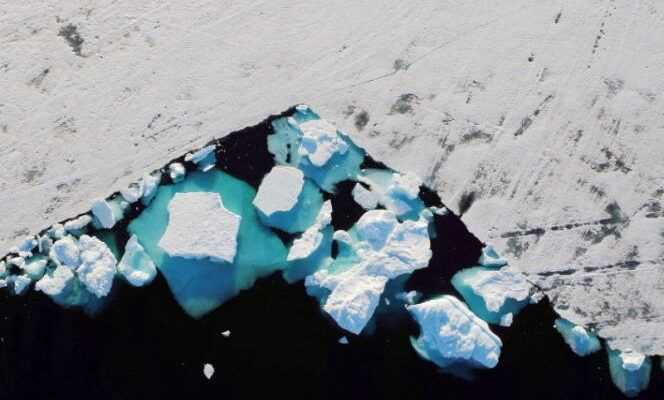It rained in mid-August at more than 3,000 meters above sea level on the Greenlandic ice sheet, an exceptional climatic phenomenon, announced Monday, August 23, the Danish meteorological institute DMI (Danmarks Meteorologiske Institut).
Rain was observed for several hours on August 14 at the US Summit station atop the ice cap, the US Snow and Ice Data Center reported. “Rain can only fall if the temperature is above or slightly below 0 ° C. So this is an extreme situation, as it may never have happened before., explained DMI researcher Martin Stendel. It is likely to be a sign of global warming. “
Temperatures were just above 0 ° C, meaning the snow melts and refreezes to turn to ice, which has only happened three times in the past ten years (2012, 2019 and 2021) , but it didn’t rain in 2012 and 2019.
Sea level rise of 10 to 18 centimeters
This rainy episode comes at a time when unusual temperatures of over 20 ° C, with local records, were recorded in northern Greenland during the summer. This heat wave resulted in an accelerated rate of melting of the ice sheet. Its decline, which began several decades ago, has accelerated since 1990 and continues to get carried away.
The second largest ice cap behind Antarctica, with an area of nearly 1.8 million square kilometers, the Greenlandic cap is causing concern among scientists, with warming in the Arctic being three times faster than elsewhere in the world.
According to a European study published in January, the melting of the Greenland icecap should contribute to the general rise in the level of the oceans to the height of 10 to 18 centimeters by 2100, that is to say 60% faster than the previous estimate. The Greenlandic cap contains in total enough to raise the level of the oceans by six to seven meters.
